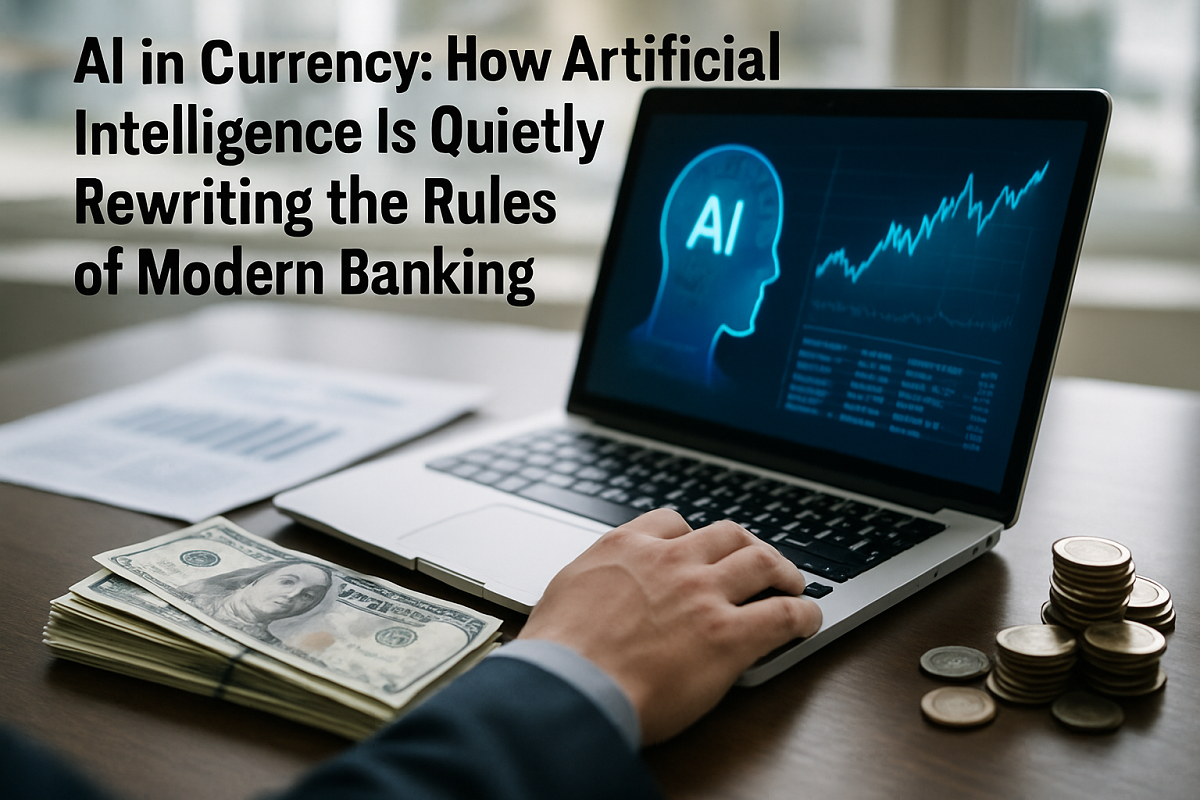In the rapidly evolving landscape of financial services, Artificial Intelligence (AI) is emerging as a silent but powerful force transforming how banks operate, serve customers, and make decisions. What once required tedious paperwork and manual processing is now being replaced by smart algorithms, natural language processing (NLP), and automated workflows.
The Indian banking sector, traditionally conservative in adopting cutting-edge technologies, is now at the forefront of this digital revolution.
From Long Queues to Instant Service: A New Banking Reality
When Delhi-based professional Seema Sharma went to the bank with her daughter to upgrade her account from minor to major, she was prepared for the typical banking bureaucracy: long queues, multiple documents, and waiting hours. But what followed was a frictionless experience that took just minutes.
- No documents were asked. No photocopies. No hassle.
- The transition was anticipated, flagged, and processed — thanks to AI-powered customer lifecycle management systems.
Such examples are now becoming commonplace as banks deploy AI to understand customer journeys, anticipate needs, and offer hyper-personalised service — all without human intervention.
AI in Core Banking: Moving Beyond Chatbots
Most people associate AI in banking with chatbots and automated customer service. While this was the entry point for many financial institutions, today’s AI applications are far more advanced and integrated across critical operations:
1. Document Processing and Automation
Banks are using AI to read and interpret complex documents such as:
- PDF loan agreements
- KYC documents
- Financial reports
Instead of manual data entry, AI systems extract, summarise, and verify data in real-time, dramatically reducing turnaround time.
2. Sentiment Analysis and Customer Insights
With millions of conversations happening via calls, emails, chats, and social media, AI tools can now perform sentiment analysis to understand customer mood, satisfaction levels, and frustration points.
This enables banks to:
- Offer proactive solutions
- Identify churn risks
- Personalise offerings based on behavioural insights
Risk Assessment and Credit Decisions: AI as the New Underwriter
One of the most powerful applications of AI in fintech and banking lies in credit scoring and loan underwriting. Traditional models relied on static data like income, CIBIL scores, and past defaults. Today, AI goes much deeper.
How AI is Enhancing Creditworthiness Analysis:
- Analysing digital footprints and payment history
- Evaluating social media behaviour and transaction trends
- Studying cash flow in real-time for MSMEs and self-employed professionals
This not only brings more people under the formal credit umbrella but also ensures dynamic risk modelling, making credit more accessible and fair.
Fraud Detection: Real-Time Intelligence at Work
With the rise of digital transactions, cybersecurity and fraud prevention have become mission-critical.
Banks are using AI to:
- Identify anomalies in real-time
- Flag suspicious transactions using pattern recognition
- Detect identity fraud and account takeover attempts
- Protect against phishing and credential stuffing
Some institutions report that AI-enabled systems can detect fraud within milliseconds, something no manual team could achieve.
AI in Wealth Management and Personal Finance
The role of AI extends into investment advisory and personal finance planning through:
- Robo-advisors that offer goal-based investment plans
- Automated portfolio rebalancing based on market shifts
- Spend analysis tools that help customers manage money better
These tools use AI to tailor recommendations in real-time, based on user income, lifestyle, and risk appetite.
Digital Transformation of Indian Banking: Quiet but Deep
The shift toward AI in Indian banking may seem quiet, but its impact is deep and irreversible. Top public and private banks — including SBI, ICICI Bank, HDFC, Axis Bank, and fintech giants like Paytm and PhonePe — are actively investing in:
- AI-powered CRMs
- Real-time fraud analytics platforms
- Voice-enabled banking assistants
- AI chat interfaces in regional languages
Even RBI’s regulatory sandbox now includes AI and ML-driven innovations in loan processing, fraud detection, and financial inclusion.
Challenges and Considerations
Despite the progress, the AI journey in banking is not without challenges:
- Data privacy concerns must be addressed
- Bias in AI algorithms can lead to unfair credit decisions
- Legacy system integration remains a barrier for older banks
- Regulatory oversight will need to keep pace with rapid AI adoption
Banks will need to implement ethical AI frameworks, ensure transparency, and engage with regulators and consumers to build trust in these systems.



 SBI Research Projects India’s FY26 GDP G...
SBI Research Projects India’s FY26 GDP G...
 Skydo Gets RBI Approval for PA-CB Licenc...
Skydo Gets RBI Approval for PA-CB Licenc...
 RBI Cancels Certificate of Registration ...
RBI Cancels Certificate of Registration ...







